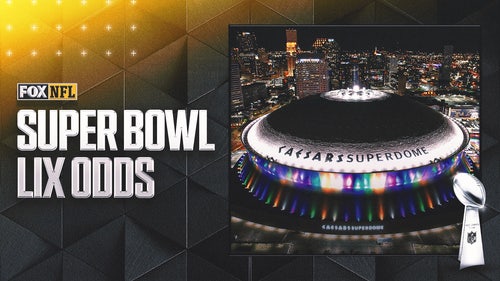Column: Payback for Elder, but he'll never be paid in full
AUGUSTA, Ga. (AP) — Lee Elder was 40 years old when he made history as the first Black player to tee it up at the Masters, after so many prime years had already been stolen from him by the scourge of racism.
When Augusta National finally extended him the long-overdue honor of serving as an honorary starter, Elder's fragile, 86-year-old body
Sitting in a chair at the first tee, an oxygen tube running beneath his nose, Elder listened intently to a glowing introduction by club chairman Fred Ridley before
Player reached over to help him up.
Elder raised his driver to acknowledge the heartwarming cheers, bit his lip to hold back the tidal wave of emotions, then sat down.
“I think that having Lee there was the right thing to do, a nice thing to do,” Nicklaus said.
Yet, it also was a sad reminder of how much the game of golf missed by excluding so many for so long.
Many of their names came up again on the opening day of the Masters.
Nicklaus recalled a Black caddie named Pon, who was on the bag for the Golden Bear's first Masters in 1959.
“Pon, that's all I knew him by,” Nicklaus said.
Another Black caddie, Willie Peterson, was at Nicklaus' side for five of his six Masters titles, which came during an era when players were required to use a looper who worked at the club.
This was a group largely of African Americans who lived in the Augusta area. Many of them were pretty decent players in their own right but never got a chance to show what they could do on the course.
Their skin was deemed the wrong color. So they settled for lugging the bags of white golfers.
“The trouble that Willie got into — I don’t know who it was matched by, but it was hard to match,” Nicklaus said with a chuckle. “But Willie was a wonderful guy. I loved Willie, and I miss him. ”
We can only imagine what Peterson and others would've brought to the game if allowed to realize their full potential.
They loved golf. Too bad it didn't always love them back.
The PGA had a Caucasian-only rule until 1961 — 14 years after Jackie Robinson broke baseball's color barrier. It took another 14 years before the Masters finally allowed a Black player, extending an invitation to Elder in 1975 after he won the Monsanto Open for his first tour victory.
Like most Black players of his era, Elder came up through the caddie ranks.
He learned the finer points of the game by watching others swing. He took that knowledge to the course in his free time, honing his skills at public facilities that allowed Black golfers to play.
“If you played around a lot of the places that I played, you had better be a good golfer, especially if you were trying to hustle a buck or two because there were so many bandits out there,” Elder said. “I’m talking about guys that were real good players that always sat around and waited for somebody to come along. And when they found out that I was a pretty good player, all of them wanted to kind of be partners with me.”
After a stint in the Army, Elder joined the United Golf Association, a tour for for Black players. He dominated that low-paying circuit, saved up his money and finally earned his PGA card in 1968.
Elder won four times on the PGA Tour, competed in the four major championships (finishing as high as 11th in both the PGA Championship and U.S. Open), and became the first African American to earn a spot in the Ryder Cup.
All along the way, he faced racist taunts and violent threats.
But Elder and his fellow pioneers — players such as Charlie Sifford, who broke the PGA tour's color line in 1961 — were more fortunate than many of their contemporaries.
For those handful who made it, that were countless others who never got a chance.
Player remembered a caddie named Ernest Nipper, who was at the South African's side when he made his Masters debut in 1957.
“He was the best caddie I ever had,” Player insisted. “He was a very good golfer. He lived here. He knew these greens inside out.”
Player can still recall the back-and-forth as they studied a 6-foot putt to save par at the fourth hole.
“Nipper,” Player said, “this is left lip.”
“Black Knight," the caddie countered, "this is on the right lip.”
When Player insisted again that he should aim at the left side of the cup, Nipper came back with, "If it’s not on the right lip, you don’t have to pay me.”
Player followed Nipper's advice.
Nipper got paid.
These days, even after Tiger Woods broke down so many racial barriers, golf remains largely white at its highest levels.
There are just four players of Black heritage on the PGA Tour — and that list includes Woods, whose brilliant career is in jeopardy after
In the wake of protests that roiled the nation last summer, when tens of thousands demanded racial and social justice,
The PGA Tour, meanwhile, has allowed a mini-tour composed largely of Black golfers to use courses in its TPC network for its events.
Elder was joined at the first tee Thursday by representatives from Paine College, along with a group of Black PGA professionals.
They got to see a bit of payback.
But Elder — like so many others — will never be paid in full.
___
Paul Newberry is a sports columnist for The Associated Press. Write to him at pnewberry(at)ap.org or at https://twitter.com/pnewberry196 His work can be found at https://apnews.com/search/paulnewberry
___
More AP golf: https://apnews.com/apf-Golf and https://twitter.com/AP_Sports






